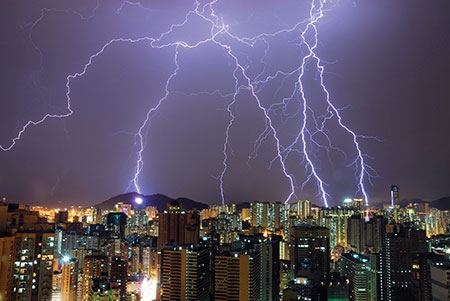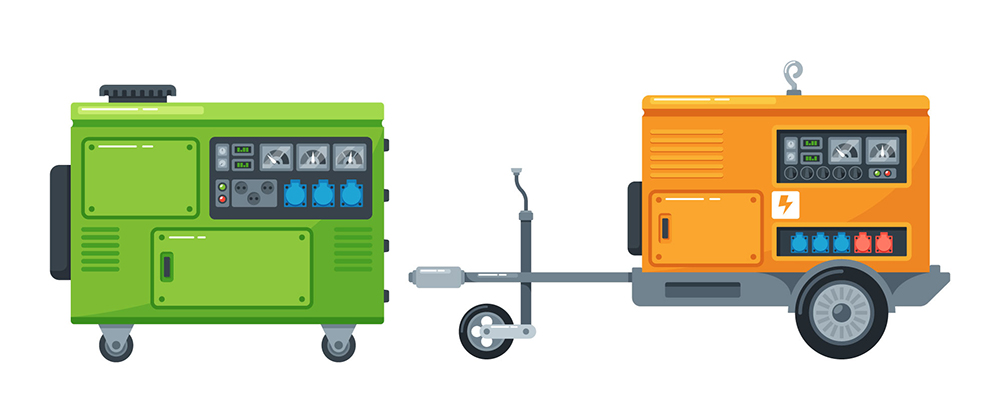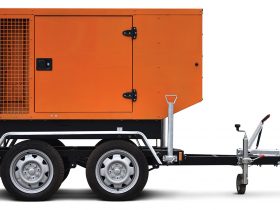When a storm downs power lines, electricity is often one of the initial services to fail. In response, many people use portable generators to weather the inconvenience until power is restored.
Carbon Monoxide Hazards
While a portable generator can solve some of the stress of managing a storm’s aftermath, consumers need to operate them with caution. Portable generators are powered by internal combustion engines. As the fuel burns to power the generator, it emits carbon monoxide (CO) into the air. If the generator isn’t properly positioned, consumers risk CO poisoning. “The danger of carbon monoxide poisoning from portable generators is a true threat during storm season,” says John Drengenberg, UL’s consumer affairs director. “But if you take the proper precautions, you can use a generator safely.”
UL, a global safety organization, recommends the following safety tips to protect against carbon monoxide poisoning:
- Place the portable generator as far away from the home as possible –
- NEVER use a generator inside homes, garages, crawl spaces, or other partly enclosed areas. Deadly levels of carbon monoxide can build up in these areas. Using a fan or opening windows and doors does NOT supply enough fresh air.
- ONLY use a generator outside and far away from windows, doors, and vents. These openings can pull in generator exhaust.
- Use a carbon monoxide alarm – Even when you use a generator correctly, CO may leak into the home. ALWAYS use a battery-powered or battery-backup CO alarm in the home.
- Follow instructions – Follow the instructions that are provided with your generator. Being mindful of these guidelines helps ensure that the CO produced by the generator will not find its way into the home, where it can potentially endanger occupants.
Electrical Hazards
- NEVER power the house by connecting a generator to a receptacle outlet – The practice, known as “backfeeding,” is extremely dangerous and presents an electrocution risk. Generators used to power a building during an outage must be connected through transfer equipment that isolates the generator supply from the utility supply.
- Use proper electrical connections – Use UL-listed outdoor extension cords when connecting the generator to run power back to the house. Also, note the maximum wattage a generator produces, and never exceed that amount with the appliances you plug in. Appliances should have their wattage listed on the products.
- Ground fault circuit interrupters (GFCIs) – These can help prevent electrocution. The majority of portable generators do not include GFCI protection. Use of a portable GFCI is recommended. It requires no special knowledge or equipment to install.
- One type contains the GFCI circuitry in a self-contained enclosure with plug blades in the back and receptacle slots in the front. It can then be plugged into a receptacle, and the electrical products are plugged into the GFCI. Another type of portable GFCI is an extension cord combined with a GFCI. It adds flexibility in using receptacles that are not protected by GFCIs. Portable GFCIs should be used only on a temporary basis and should be tested prior to every use.
- Portable generators typically are not weatherproof – They can pose the risk of electrocution and shock when used in wet conditions. Use them outdoors, but keep them protected from direct exposure to rain and water. Generators should be operated on a dry surface where water cannot reach them.
- Generators vibrate in normal use – During and after use of the generator,
inspect it as well as extension cords and power supply cords connected to it for damage resulting from vibration. Have damaged items repaired or replaced as necessary. Do not use plugs or cords that show signs of damage, such as broken
or cracked insulation or damaged blades.
Fire Hazards
- Limit gasoline storage and look for the UL Mark on gasoline containers – Gasoline expands when heated, producing fumes that can be ignited by the smallest spark. The more gas on hand, the more fumes in the air and the greater the risk of a fire starting from even a light switch or static electricity.
- Fuel and vapors are extremely flammable – Before refueling the generator, shut the engine off and let it cool down, as fuel spilled on hot parts can ignite.















Find Us on Socials